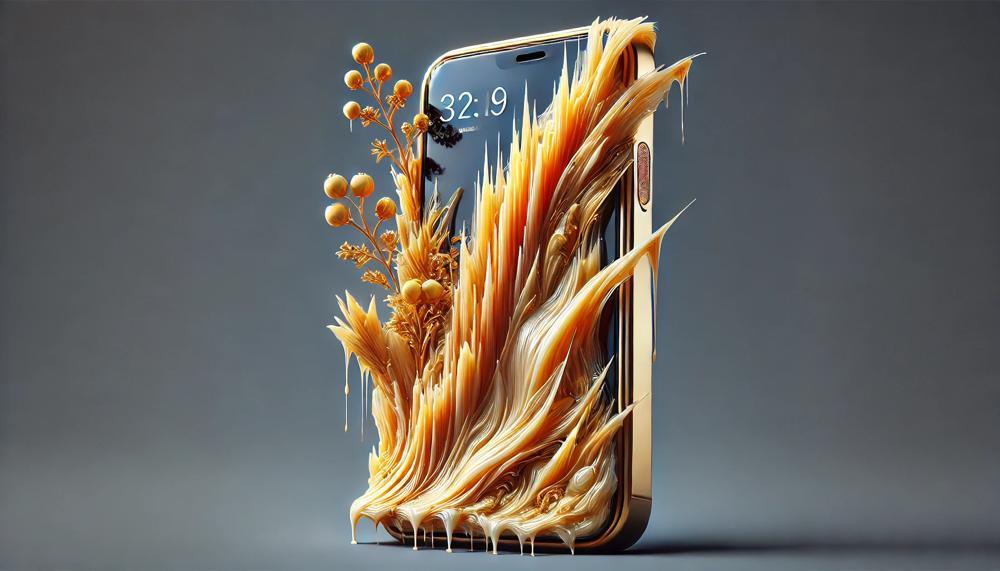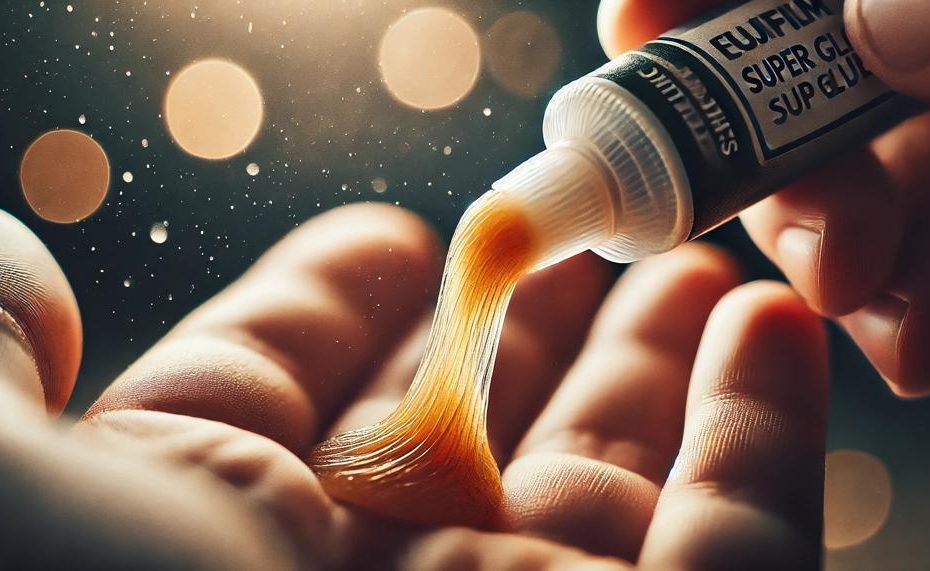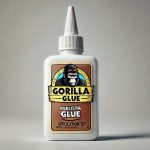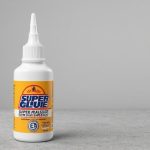Can dried super glue be removed? The answer is a resounding yes. This fast-acting adhesive, known for its incredible bonding strength, can be a challenge to tackle once it’s dried. However, whether it’s stuck to your fingers, countertops, or clothes, there are proven methods to safely and effectively remove dried super glue without causing damage to the underlying surface.
Super glue, or cyanoacrylate, has a knack for sticking to almost anything in an instant. The good news is that with the right approach, you can overcome this sticky situation. This blog will guide you through the essential steps and tools needed to remove dried super glue from various surfaces.
Key takeaways:
- Identify the Surface: Different materials require different removal methods. Know what you’re working with before you start.
- Use the Right Solvent: Acetone (nail polish remover) is often the go-to for many surfaces, but it’s not universal. Rubbing alcohol and specialized glue removers can also be effective.
- Gentle Scraping: For tougher bonds on hard surfaces, careful scraping with a razor blade or scraper might be necessary.
- Safety First: When dealing with skin, prioritize gentle methods like soaking in warm soapy water or using skin-friendly oils like baby oil or petroleum jelly.
Dive into the following sections for detailed instructions and tips to make sure you’re fully equipped to handle any dried super glue mishap with ease.
Table of Contents
- 1 How to Dissolve Super Glue
- 2 How to Get Super Glue off Everything
- 3 Removing Super Glue from Tough Surfaces
- 4 Standard Ceiling Height – Elevating Spaces
- 5 How to Paint a Bathtub – Going from Drab to Fab
- 6 Temperature to Paint Outside – Weather’s Impact on Outdoor Art
- 7 Removing Super Glue from Tough Surfaces
- 8 Standard Ceiling Height – Elevating Spaces
- 9 Temperature to Paint Outside – Weather’s Impact on Outdoor Art
- 10 Conclusion
How to Dissolve Super Glue
Dissolving dried super glue can be challenging, but several effective methods can make the process easier, depending on the surface or material affected.
| Method | Application | Procedure |
| Acetone | Cotton ball soaked in acetone | Dab on glue, let sit, scrub gently |
| Rubbing Alcohol | Cloth or cotton ball with alcohol | Apply, let sit, rub gently |
| Warm Soapy Water | Soak affected area | Soak, then peel or scrape off |
| Petroleum Jelly | Apply generously | Let sit overnight, rub off |
| Commercial Removers | Follow product instructions | Apply, let sit, scrub gently |
| Lemon Juice | Apply juice | Let sit, scrub with toothbrush |
| Mechanical | Razor blade or toothbrush | Peel or scrub off softened glue |
How to Get Super Glue off Everything
To remove dried super glue from various surfaces, several household items can be effective. The key is to match the method to the specific material to avoid damage.
Acetone (Nail Polish Remover)
- Plastic: Use with caution as acetone can melt some plastics. Test on a small area first.
- Metal: Apply acetone using a cotton swab. It dissolves the glue quickly.
- Glass: Safe and effective. Apply and scrape off with a razor blade.
- Fabric: Test on an inconspicuous area to ensure it doesn’t bleach or damage the fabric.
Rubbing Alcohol (Isopropyl Alcohol)
- Plastic: Gentler than acetone but may require more effort. Test first.
- Metal: Effective for most metal surfaces.
- Glass: Works well but slower than acetone.
- Fabric: Safer for fabric compared to acetone. Apply and blot with a cloth.
Baking Soda and Coconut Oil
- Skin: Mix to form a paste. Apply to the glue and gently rub to loosen.
- Wood: Apply the paste, let it sit, and then gently scrub with a soft brush.
- Plastic: Safe for most plastics. Apply and scrub with a soft cloth.
- Fabric: Gentle and non-damaging. Work into the fabric and rinse out.
Vinegar
- Plastic: Safe but slower than acetone. Soak and scrub gently.
- Metal: Effective for light glue residues.
- Wood: Won’t damage wood finishes but may take time to work.
- Glass: Safe and effective. Use a cloth to apply and remove.
Soap and Warm Water
- Skin: Soak the affected area in warm soapy water and gently peel off the glue.
- Fabric: Soak the fabric in warm soapy water before attempting other methods.
Removing Super Glue from Tough Surfaces
Removing super glue from tough surfaces can be challenging, but several effective methods exist to tackle this issue.
Below, we outline some practical techniques to help you remove dried super glue from various robust surfaces:
Acetone
Acetone, commonly found in nail polish remover, is a powerful solvent for breaking down super glue bonds.
Method:
- Soak a cotton ball or cloth in acetone.
- Gently rub it on the affected area.
- The glue should start dissolving and coming off.
Note: Test on a small area first as acetone can damage some surfaces like plastic or painted areas.
Warm Water and Soap
This method is less abrasive and suitable for less sensitive surfaces.
Method:
- Soak the affected area in warm soapy water for a few minutes.
- Use a soft cloth or sponge to scrub the glue gently.
Tip: This might need several attempts for tougher stains.
Isopropyl Alcohol
Isopropyl alcohol works similarly to acetone by dissolving the glue bonds.
Method:
- Apply a small amount of isopropyl alcohol to the glue.
- Let it sit for a few minutes.
- Rub gently with a cloth or cotton ball until the glue starts to come off.
White Vinegar

A natural alternative, white vinegar’s acidity can break down super glue bonds.
Method:
- Soak a cloth or cotton ball in white vinegar.
- Place it on the glue for a few minutes.
- Gently scrub with a soft cloth or sponge.
Note: Multiple applications may be necessary for tougher stains.
Sandpaper
For extremely tough surfaces like metal or wood, sandpaper can physically remove the glue.
Method:
- Use fine-grit sandpaper.
- Gently scrape off the glue without damaging the underlying surface.
Note: This method is not suitable for delicate surfaces.
Table of Methods for Removing Super Glue
| Method | Materials Needed | Instructions |
| Acetone | Acetone, Cotton ball/Cloth | Soak cotton ball/cloth in acetone and rub on glue |
| Warm Water and Soap | Warm water, Soap, Soft cloth/Sponge | Soak area in soapy water and scrub gently |
| Isopropyl Alcohol | Isopropyl alcohol, Cotton ball/Cloth | Apply alcohol, let sit, and rub gently |
| White Vinegar | White vinegar, Cotton ball/Cloth | Soak cloth in vinegar, place on glue, scrub gently |
| Sandpaper | Fine-grit sandpaper | Gently scrape glue off surface |
Standard Ceiling Height – Elevating Spaces
Standard ceiling height has a profound impact on the design and functionality of any space, influencing both aesthetics and practical use.
Aesthetics
:
- Sense of Space: High ceilings create a feeling of openness and grandeur, making areas feel larger and more luxurious. They enable dramatic architectural features like chandeliers or exposed beams, enhancing visual appeal.
- Intimacy: Lower ceilings, on the other hand, promote a sense of coziness and intimacy, making spaces feel warm and inviting. This is often desirable in residential settings or small commercial venues like cafes and boutique shops.
Functionality
:
- Air Circulation and Temperature Control: High ceilings improve air circulation, which can be beneficial in hot climates or large commercial spaces. They allow heat to rise, potentially making the space cooler and more comfortable.
- Privacy and Concentration: Lower ceilings are better suited for environments requiring concentration and privacy, such as offices and study areas. They help contain sound and can make spaces feel more personal and secure.
- Lighting and Ambiance: Ceiling height directly influences lighting design. High ceilings offer opportunities for dramatic lighting installations, while lower ceilings necessitate more strategic lighting to avoid creating a cave-like atmosphere.
- Vertical Space Utilization: In commercial settings, high ceilings can accommodate tall shelving, mezzanines, or vertical displays, optimizing storage and display areas.
Design Considerations
:
- Furniture and Fixtures: The choice of furniture and fixtures should complement the ceiling height to maintain visual balance. Tall furniture suits high ceilings, while lower, more compact pieces are ideal for spaces with lower ceilings.
- Material and Finishes: The materials and finishes used can enhance the perception of height. Light colours and reflective surfaces can make ceilings appear higher, while darker hues and textured finishes might make them feel lower.
How to Paint a Bathtub – Going from Drab to Fab
After painting a bathtub, it typically takes about 7 to 10 days for the glaze to fully cure before you can use the tub normally. This curing time ensures the glaze hardens completely, providing a durable and long-lasting finish.
| Drying Stage | Time Required | Details |
| Initial Drying | 24 to 48 hours | After this period, the paint will be dry to the touch but not fully cured. |
| Partial Curing | 3 to 5 days | The surface starts to harden, but it is still vulnerable to damage. |
| Full Curing | 7 to 10 days | The paint is completely hardened, and the bathtub can be used normally. |
It’s crucial to avoid using the tub during this curing period to prevent damaging the fresh paint. Adhering to these timeframes ensures a smooth, glossy finish that lasts.
Temperature to Paint Outside – Weather’s Impact on Outdoor Art
Temperature has a significant impact on the drying process of super glue for outdoor art projects. Warmer temperatures accelerate the drying time, allowing the glue to set and cure faster. Conversely, cooler temperatures slow down this process, making it take longer for the glue to bond materials securely.
| Temperature | Effect on Drying Time | Explanation |
| High Temperature | Speeds up drying | Increases molecular movement, allowing glue to set faster |
| Low Temperature | Slows down drying | Decreases molecular movement, prolonging the setting time |
| High Humidity | Speeds up drying | Moisture in the air helps accelerate the curing process |
| Low Humidity | Slows down drying | Less moisture results in slower curing |
For optimal results, it’s advisable to use super glue in moderate temperatures and maintain appropriate humidity levels. This ensures the adhesive bonds effectively and quickly without compromising its strength.
Removing Super Glue from Tough Surfaces
| Method | Steps | Notes |
| Acetone |
Dampen a cloth or cotton ball with acetone (commonly found in nail polish remover). Gently rub it on the dried super glue until it starts to soften. Use a scraper or fingernail to peel off the softened glue. |
May take a few attempts. Be careful with delicate surfaces as acetone can cause damage. |
| Vinegar |
Mix equal parts of vinegar and warm water in a bowl. Soak the affected area for 15-20 minutes. Scrub off the softened glue with a cloth or sponge.For tougher stains, make a paste with vinegar and baking soda, apply, and let sit for 10 minutes before scrubbing. |
Gentler than acetone, suitable for more sensitive surfaces. |
| Rubbing Alcohol |
Dampen a cloth with rubbing alcohol. Gently rub it on the dried glue until it starts to soften. Use a scraper or fingernail to remove the glue. |
Less harsh than acetone, ideal for plastic or painted surfaces. |
| Lubricants (WD-40, Cooking Oil) |
Apply a small amount of lubricant to the dried glue. Let it sit for a few minutes. Gently rub off the glue with a cloth. |
Useful for delicate surfaces like glass or electronics. |
| Heat |
Use a hairdryer on its highest setting. Blow hot air onto the affected area for a few minutes. Attempt to scrape off the glue. |
Be careful not to overheat and damage the surface. |
Standard Ceiling Height – Elevating Spaces
Enhancing the Look and FeelSense of Space:
- Higher ceilings create a perception of more space, making rooms feel larger and more expansive.
- This can be especially beneficial in smaller homes or rooms, where every inch counts.
Natural Light:
- Taller ceilings often allow for larger windows, which can let in more natural light.
- Improved natural lighting can enhance the mood and ambience of a room, making it more inviting and pleasant.
Air Circulation:
- Increased ceiling height can improve air circulation, making the space feel fresher and more comfortable.
- This can also contribute to better air quality and overall home health.
Design Flexibility:
- Higher ceilings provide more flexibility for interior design, allowing for features like ceiling fans, chandeliers, and other decorative elements.
- These elements can add a touch of elegance and sophistication to a room.
Acoustic Benefits:
- Elevated ceilings can improve acoustics, reducing noise levels and echo.
- This can be particularly advantageous in living rooms and entertainment areas.
Comparison of Ceiling Heights
| Ceiling Height | Benefits | Considerations |
| 8 Feet | – Standard height for many homes – Cost-effective – Easier to heat and cool |
– May feel confined in smaller spaces – Limited design options |
| 9 Feet | – Enhances spaciousness – Better natural light and air circulation – Greater design flexibility |
– Slightly higher construction costs – May require more energy for heating/cooling |
| 10+ Feet | – Luxurious and grand feel – Maximum light and design options – Superior air circulation and acoustics |
– Higher construction and maintenance costs – Potentially more energy use |
How to Paint a Bathtub – Going from Drab to Fab
When painting a bathtub, preparation is key to achieving a professional and long-lasting finish. Here are the steps to properly prepare and paint a bathtub:
| Step | Description | Details |
| Gather Supplies | Collect necessary materials and tools. | You’ll need an epoxy tub and tile refinishing kit, painter’s tape, sandpaper (400-600 grit), epoxy putty, respirator mask, and cleaning supplies. |
| Clean the Tub | Thoroughly clean the surface. | Use a heavy-duty cleaner to remove soap scum, oils, and grime. Rinse well and dry completely. |
| Repair Damages | Fix chips and scratches. | Apply epoxy putty to any damaged areas, then sand smooth once dry. |
| Sand the Surface | Scuff the entire surface. | Sand the tub with wet/dry sandpaper to create a rough texture for better paint adhesion. Rinse and dry the tub. |
| Mask Surroundings | Protect areas you don’t want to paint. | Use painter’s tape to cover fixtures, tiles, and edges around the tub. |
| Ventilate Area | Ensure proper ventilation. | Open windows and doors, and use fans to ventilate the bathroom. Wear a respirator mask to avoid inhaling fumes. |
| Mix the Epoxy Paint | Prepare the paint according to instructions. | Follow the manufacturer’s instructions on the epoxy kit for mixing the paint components. |
| Apply the First Coat | Start painting. | Begin at the top corner of the tub and apply a thin, even coat. Let it dry according to the kit’s directions. |
| Apply the Second Coat | Ensure even coverage. | Once the first coat is dry, apply a second thin coat, working carefully to avoid drips and bubbles. |
| 10. Let It Cure | Allow the paint to set. | Wait at least three days before using the tub to ensure the paint fully cures and hardens. |
Temperature to Paint Outside – Weather’s Impact on Outdoor Art
Temperature plays a critical role in the drying process of super glue, especially in outdoor art projects. Here’s how:
- High Temperatures: When the temperature is high, super glue dries much faster. Heat accelerates the evaporation of the solvent in the glue, leading to a quicker bond. However, too much heat can make the glue set too quickly, possibly before the pieces are properly aligned.
- Low Temperatures: In cooler conditions, the drying process slows down significantly. Cold temperatures cause the adhesive to take longer to cure, which can be advantageous if you need more time to adjust the pieces. However, prolonged drying times can also lead to weaker bonds if the glue does not set properly before environmental factors affect it.
- Extreme Temperatures: Extremely high or low temperatures can adversely affect the glue’s performance. High temperatures can weaken the bond over time, while extremely cold conditions can prevent the glue from curing at all, leaving the bond fragile.
- Optimal Conditions: For the best results, super glue should be used in environments with moderate temperatures, typically around 20-25°C (68-77°F). This range allows the glue to dry at an optimal rate, ensuring a strong, durable bond.
Factors Influencing Super Glue Drying Time
| Factor | Effect on Drying Time | Details |
| Temperature | High Temp: Faster | Higher temperatures accelerate solvent evaporation. |
| Low Temp: Slower | Lower temperatures slow down the curing process. | |
| Humidity | High Humidity: Faster | Moisture in the air helps speed up the curing process. |
| Low Humidity: Slower | Dry air extends the time required for the glue to set. | |
| Surface Type | Porous: Faster | Porous surfaces absorb some of the adhesive, speeding up drying. |
| Non-Porous: Slower | Non-porous surfaces delay solvent evaporation, slowing the process. |
Conclusion
Removing dried super glue may seem daunting, but it’s entirely feasible with the right techniques and tools. This adhesive, known for its formidable bonding strength, can be tackled effectively whether it’s stuck to your skin, household surfaces, or fabrics. The key lies in identifying the surface and choosing the appropriate method.
For many surfaces, acetone (commonly found in nail polish remover) is highly effective. Soak a cotton ball in acetone, dab it on the glue, and let it sit before gently scrubbing. However, be cautious as acetone can damage some materials, like certain plastics. Rubbing alcohol is a safer alternative for delicate surfaces, working similarly but with a gentler touch.
For skin, warm soapy water and patience are your best allies. Soak the affected area and gently peel off the glue after it softens. Petroleum jelly and skin-friendly oils like baby oil can also work wonders, especially when left on overnight.
Other household items like white vinegar and lemon juice offer natural solutions, ideal for those who prefer less harsh chemicals. For tougher, resilient surfaces, mechanical methods like gentle scraping with a razor blade or using fine-grit sandpaper can physically remove the glue without damaging the surface.






